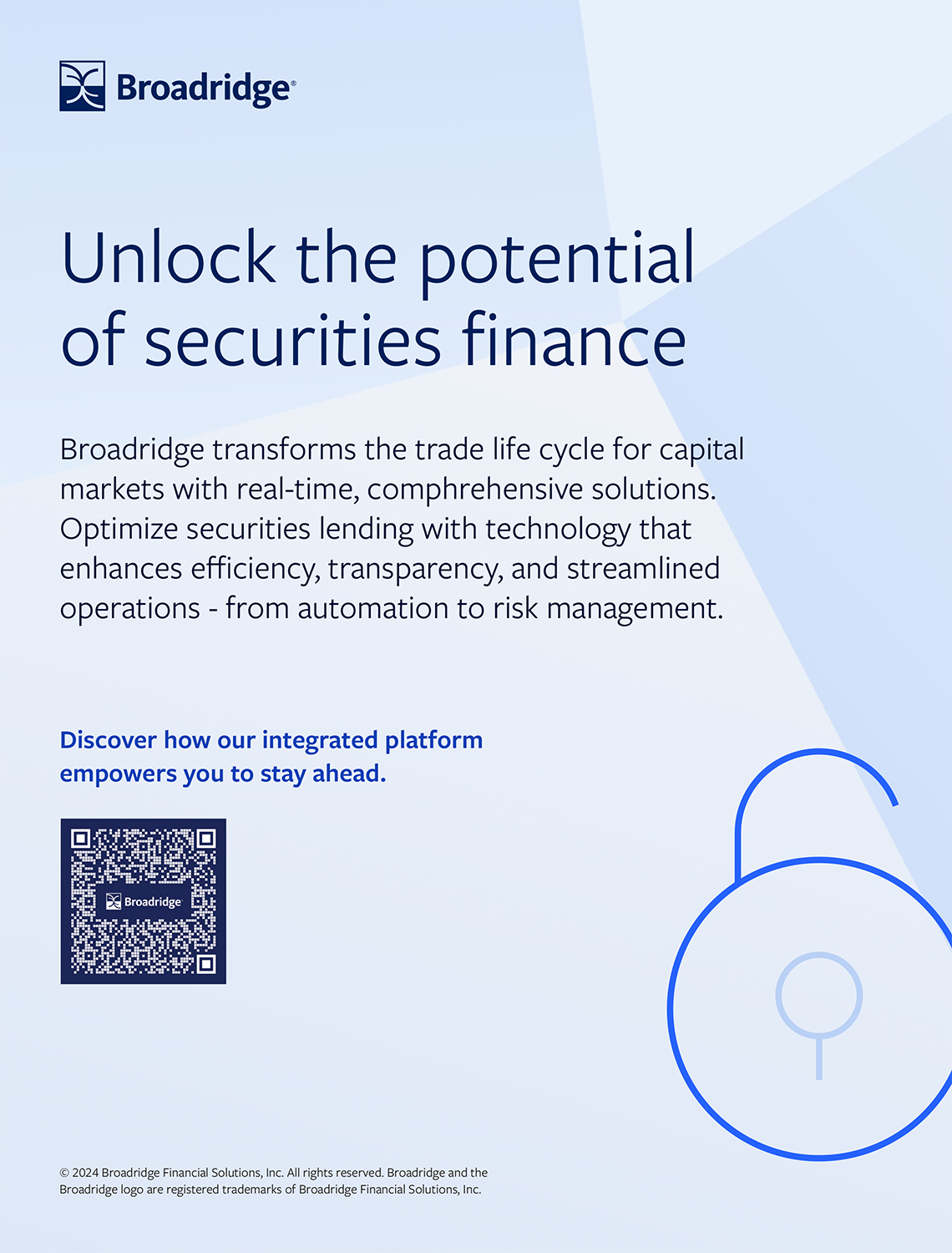SFTS: Securities finance ‘behind the technology curve’
23 May 2022 UK
 Image: inamar/stock.adobe.com
Image: inamar/stock.adobe.com
The securities finance industry is “behind the technology curve”, according to a panel at the Securities Finance Technology Symposium.
Compared to other areas of capital markets, from how businesses transact to how technology operates, the securities finance sector is travelling down a clear path that pushes the industry forward.
However, areas including foreign-exchange and cash equities have been making their way down that innovative direction for several years already.
Securities finance is moving much slower than other asset classes and it has become clear to market participants that there needs to be a drive for transformation and innovation, the panel heard.
The boundaries of this go beyond technology, new work flows and paradigms also need to be adopted.
The session titled “FutureTech” heard from Wassel Dammak, head of collateral solutions strategy at VERMEG, Ken DeGiglio, chief information officer at EquiLend, David Shone, director of market infrastructure and technology at ISLA, and Martin Walker, head of product management, securities finance and collateral management at Broadridge.
While analysing if the sector has found itself behind the curve, one panellist focuses on collateral management as an operational area which has seen significant improvement over the past decade — driven particularly by regulation.
The panellist reveals that the industry has seen increased automation across multiple parts of the collateral lifecycle and good collaborations across the industry to improve efficiency.
Even though there are some discrepancies between the different asset classes, and certain processes are not yet there in terms of automation, overall, technology — such as software-as-a-service and cloud open architecture with native APIs — has been key to transform the collateral infrastructure and streamline the connectivity within the collateral ecosystem.
Following on from these remarks, another panellist pinpoints a need for change in the industry to drive technology advances in securities finance. He says the industry remains a very traditional business with players that have been around for a long time.
There is now a realisation that “new blood” is needed as well as a requirement to consider how new technologies can support innovation securities finance.
In this relationship-driven business, it is essential to focus on people as well as technology, notes one panellist. By investing in automation and improvements in operational efficiency, the industry’s ability to get the best from its business relationships will be reinforced through becoming “smarter, quicker and more cost effective”.
Compared to other areas of capital markets, from how businesses transact to how technology operates, the securities finance sector is travelling down a clear path that pushes the industry forward.
However, areas including foreign-exchange and cash equities have been making their way down that innovative direction for several years already.
Securities finance is moving much slower than other asset classes and it has become clear to market participants that there needs to be a drive for transformation and innovation, the panel heard.
The boundaries of this go beyond technology, new work flows and paradigms also need to be adopted.
The session titled “FutureTech” heard from Wassel Dammak, head of collateral solutions strategy at VERMEG, Ken DeGiglio, chief information officer at EquiLend, David Shone, director of market infrastructure and technology at ISLA, and Martin Walker, head of product management, securities finance and collateral management at Broadridge.
While analysing if the sector has found itself behind the curve, one panellist focuses on collateral management as an operational area which has seen significant improvement over the past decade — driven particularly by regulation.
The panellist reveals that the industry has seen increased automation across multiple parts of the collateral lifecycle and good collaborations across the industry to improve efficiency.
Even though there are some discrepancies between the different asset classes, and certain processes are not yet there in terms of automation, overall, technology — such as software-as-a-service and cloud open architecture with native APIs — has been key to transform the collateral infrastructure and streamline the connectivity within the collateral ecosystem.
Following on from these remarks, another panellist pinpoints a need for change in the industry to drive technology advances in securities finance. He says the industry remains a very traditional business with players that have been around for a long time.
There is now a realisation that “new blood” is needed as well as a requirement to consider how new technologies can support innovation securities finance.
In this relationship-driven business, it is essential to focus on people as well as technology, notes one panellist. By investing in automation and improvements in operational efficiency, the industry’s ability to get the best from its business relationships will be reinforced through becoming “smarter, quicker and more cost effective”.
← Previous technology article
DTCC outlines new resilience principles amid “increasingly complex technology landscape”
DTCC outlines new resilience principles amid “increasingly complex technology landscape”
NO FEE, NO RISK
100% ON RETURNS If you invest in only one securities finance news source this year, make sure it is your free subscription to Securities Finance Times
100% ON RETURNS If you invest in only one securities finance news source this year, make sure it is your free subscription to Securities Finance Times



